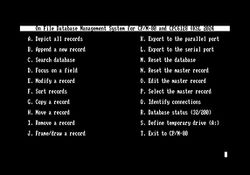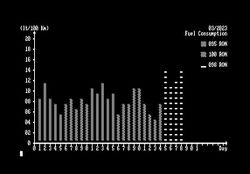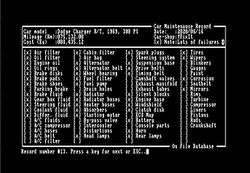On File Database Management System was released in June 2024 by KSL in order to celebrate the anniversaries of CPC (40 years!) and CP/M-80 (50 years!). On File is a business application similar to the MSDOS-era PC applications and one of the most recent (2024) projects developed for CP/M.
On File database is quick and reliable. It uses the entire CPC screen as the platform for the records; thus there is plenty of space to store large amount of data. In addition, a wide variety of characters and symbols can be included in the records, hence the database can contain data beyond the typical and traditional text type. Setting up a new database using On File is very easy and can be performed in three steps: 1) start the new file system by resetting the database and the master record, 2) frame/draw and edit the structure of the master record, 3) append new records in the database on the basis of the master record. The database is fully dynamic, thus the user can modify the master record as well as any record anytime. Furthermore, the database can be either flat or relational. Children records include the ^ symbol followed by the relational key and one space, for example ^Z80 . Parent records include the relational key (not the ^ symbol) followed by one space, for example Z80 . As per Cosmos, On File has been developed on the basis of all the hardware peripherals as well as the software that were (contemporary) available for the CP/M and the CPC6128. The original disk contains some demo master records (*.002 files), some demo records as well as the boot sectors for CP/M 2.2 (v1.2).
On File Register Book (On File extension) will be released in summer 2025. Thus, the user can set up a Register of e.g Earthquakes (date, time, location, magnitude, depth) using On File Register, while keeping detailed records of the ones that were stronger than e.g. 6 R using On File. As per Cosmos, On File Register has a resume option in order to access the RAM expansion contents anytime and it also supports the On File screen saver.
On File database is disk-based and every record has its own unique filename, stored in the disk drive. On File capacity is 200 screen records (equal to 400 KB), it is thus an ideal application for the 20 MB Dobbertin Harddisc which supports up to 512 file entries as well as ROMDOS or ParaDOS 80 track disks. On the other hand, On File Register Book is RAM-based and single filed, thus it provides practically endless capacity for 128 byte records.
Good applications are like good songs, they never die.


